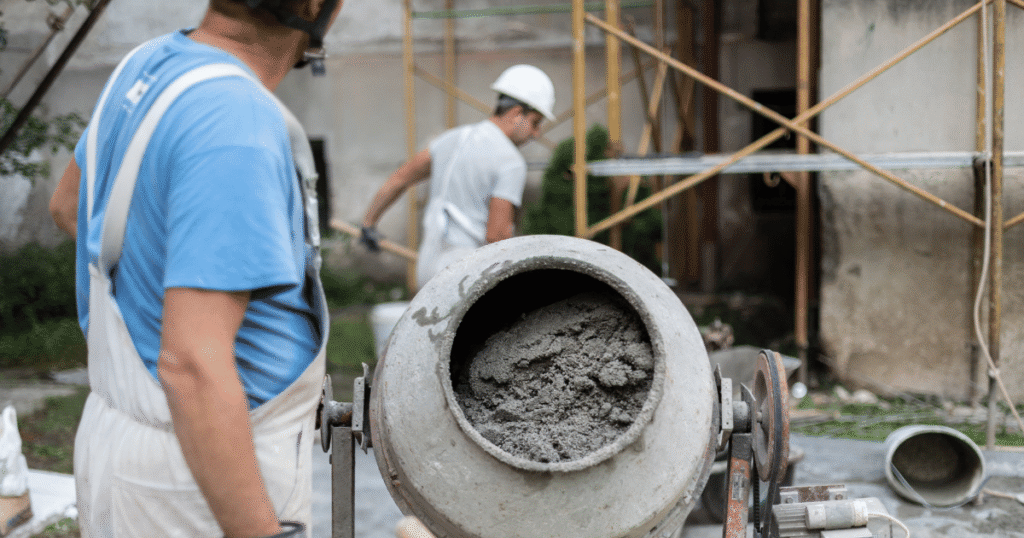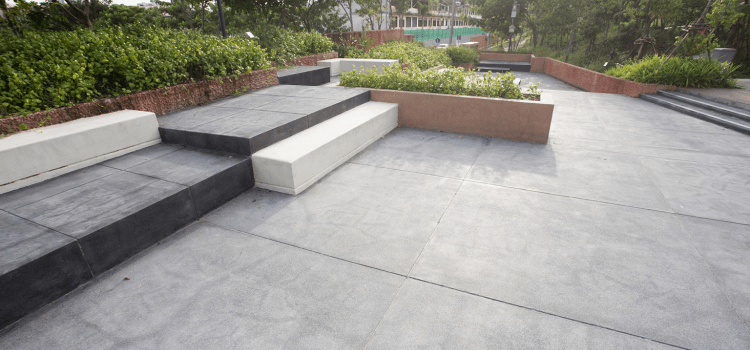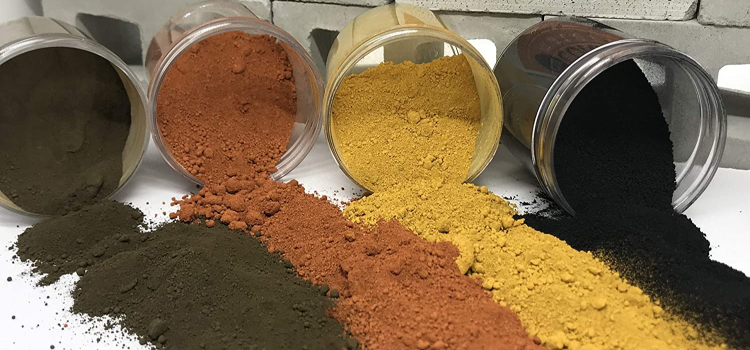The curing process of concrete can take up to 28 days to reach 90% of its overall strength and if we take a look at this concrete curing time chart we can further understand the curing times for concrete and why it is important to allow at least 7 days ( 1 Week ) before using or loading your concrete with any kind of weight or stress.
This is because concrete will reach 70% of its overall strength after 7 days after the concrete being placed.

We can see that in the first 7 days of concrete being placed and finished, the concrete will reach 70% of its potential strength.
Over the next 21 days, the concrete should reach 90% of its overall compression strength, and the last 10% will happen over time and at a prolonged speed.
Variations In Concrete Curing Times
Even though we can graph the curing times for concrete, it is important to remember that concrete brews can differ from load to load, and understanding concrete, how it dries and cures, will give you an extra advantage when finishing concrete, and knowing when concrete can be put under load or strain.
The Slump Of Your Concrete
Understandably concrete that is runnier and has a lot more water content will take longer to cure than a drier stiffer brews of concrete. Adding too much water can weaken your concrete so be mindful not to overwater.
Weather Temperature
Underfloor And Ground Conditions
Ideally, all foundations for concrete should have plastic polythene installed to stop moisture from soaking back into the concrete once cured. If not, and you are pouring your concrete straight onto open ground, be sure to soak the ground first if it is going to be a hot day.
The dry ground can suck the moisture out of your concrete at a rapid pace, this can cause your concrete to dry too quickly sometimes resulting in cracking concrete, or a rushed finish job on the surface.
Thickness Of Your Concrete Pad
In most cases, concrete is about 100mm thick with deeper and or thicker footings, thickenings, or both.
The thicker the concrete, the longer it will take to completely evaporate the water content within the concrete.
The MPA Of Your Concrete
The higher the MPA ( Mega Pascals ) of your concrete, the faster it will cure, although there is a maximum cement limit per cube, as adding too much cement can actually make your concrete weaker, and concrete cracks may start to appear as it dries.
In most situations and concrete projects, concrete driveways, house floors, garages, etc, are made with 25MPa concrete.
Using A Concrete Curing Time Chart
If you are new to concrete or just brushing up on concrete curing times, keep in mind one basic rule, or should I say guide, is the 7 to 70 rule.
In just 7 days most concrete should reach about 70% of its total compression strength, the next 20% happens over the next 21 days and the last 10% over the next 100 years or so.
Using this as a guide we can recommend people staying of fresh pads for at least 7 to 10 days, this way we can be sure it has reached a minimum of about 70% cure rate.
After the 7 to 10-day curing process, driveways and other load-bearing concrete can be used although I would not recommend heavy loads until at least 28 days after the pour.

The difference Between Concrete Curing Times And Concrete Drying Times
Throughout my 14 to 15 years as a concrete placer and finisher, I have heard and seen the confusion in people between concrete being dry, and concrete being cured.
Dry concrete is NOT the same as cured concrete!
When the concrete has been placed, finished, and the boxing is stripped, the concrete is in most cases dry, and the surface will be hard enough to walk on without leaving any footprints at all.
Cured concrete means the concrete has been allowed to reach at least 70 – 90% of its total strength, which is in most cases around the 7 – 21 day range after placing and finishing the concrete.
“This book explains exactly why curing is so important and shows you how best to do it… There are numerous examples of how concrete curing (or a lack of it) has affected concrete performance in real-world situations.
These include examples from hot and cold climates, as well as those related to high-performance concretes.
This book is aimed at construction professionals who want to ensure the quality and durability of their concrete structures and demonstrates that curing is well worth the extra effort and cost.”
>>> Available On Amazon.com <<







